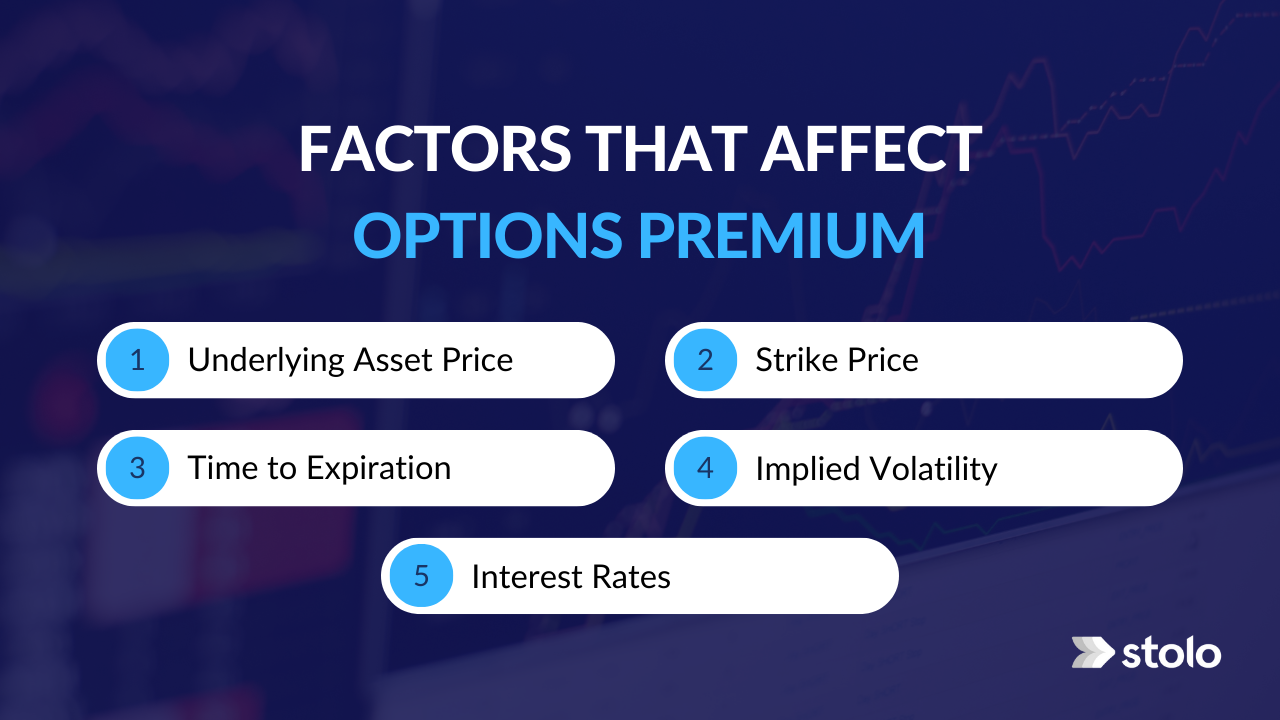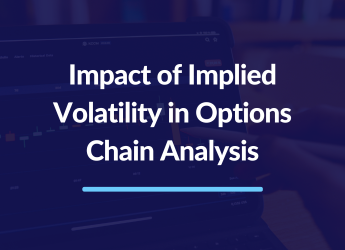The price investors pay for an option is the options premium, which is impacted by several factors. Options trading may be a profitable method to participate in the financial markets. Still, it can also be hazardous if you don’t grasp the elements influencing options premium. In this blog article, we’ll look at some important factors that affect options premium and help you understand how options trading works.
1. Underlying Asset Price
The underlying asset’s price is one of the most critical factors that affect options premium. An option holder has the right, but not the responsibility, to purchase or sell the underlying asset at a given price within a particular time. If the underlying asset’s price rises, the option holder may be able to sell the option at a higher price, raising the options premium. If the underlying asset’s price falls, the option holder may not sell the option for as much, decreasing the options premium.
2. Strike Price
The strike price of an option is another factor that might affect its premium. If the option is exercised, the strike price is the price at which the underlying asset can be bought or sold. In general, options with strike prices closer to the underlying asset’s current market price will have larger premiums than options with strike prices further away from the current market price.
Consider a call option on a stock with a current market value of 50. A call option with a strike price of ₹45 may have a smaller premium than one with a strike price of ₹55 because the latter is closer to the current market price and may be more likely to be exercised.
3. Time to Expiration
Another major factor that might affect options premium is the time to expiration. Options have a finite lifespan, and the option’s value might alter dramatically as the expiration date approaches. The longer the period to expiry, the larger the options premium because the option holder has more opportunity to benefit from the option.
The option’s time value may drop as the expiration date approaches because there is less time for the option to move in the desired direction. As the expiration date approaches, the options premium may fall.
4. Implied Volatility
Another major issue influencing options premium is implied volatility. The options market generates implied volatility, which measures the expected volatility of the underlying asset over the option’s duration. Options premium on assets with higher implied volatility will often be higher than those with lower indicated volatility.
Higher implied volatility suggests a greater possibility of the underlying asset changing dramatically in price. However, this might result in larger gains for the option holder. Decreased implied volatility suggests a decreased possibility of major price changes, which can lead to lower premiums.
5. Interest Rates
It can also affect options premium, especially for options with a longer period to expiry. Options premiums on assets with higher interest rates are usually greater than premiums with lower interest rates.
Rising interest rates can raise the cost of carrying the underlying asset, affecting the option’s value. For example, if an investor plans to keep a call option on a stock for six months, they must consider the cost of borrowing money to buy the underlying stock during that period. If interest rates are high, borrowing costs will rise, boosting the options premium.
Conclusion
To summarise, options trading may be a sophisticated and subtle investing strategy. Knowing the elements that influence options premium is critical to success. The underlying asset price, strike price, time to expiry, implied volatility, interest rates, and dividends are all factors that affect options premium. Investors may make educated judgements regarding options trading. Earn from their investments by carefully analysing these elements and remaining updated about market circumstances. However, it is crucial to emphasise that options trading is risky and should only be done with a clear grasp of the markets and the tactics involved.


